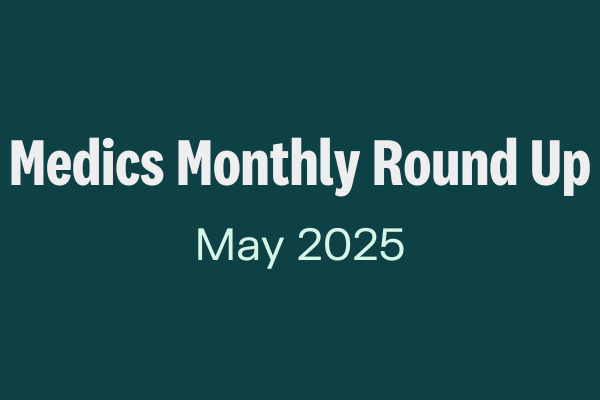 Blog by Karen Swinson, Clinical Lead, RLDatix
Blog by Karen Swinson, Clinical Lead, RLDatix
Workforce Productivity and Safe Staffing are often seen as opposite ends of a pendulum and yet their interdependence and influence on each other is increasingly evident in recent years, more akin to yin and yang in the continuous strive to find the optimum for both.
Ultimately patient safety requires a skilled and competent workforce deployed to match the activity and needs of patients, cognisant of the daily operational fluctuations that occur. Yet planning and deployment is way more than a numbers game. It is complex and it seems like the hits just keep on coming. For those balancing the daily requirements of safe staffing across the acute bed base in the UK, skill mix, additional duty requirements, additional bed capacity, redeployments, one to one care and increasing unavailability or staff absence, all add to the complexities and can easily throw a particularly fragile workforce off balance.
The complexity of planning and deployment
The number of bodies, whether medics, nurses, AHPs or other staff groups, can be false assurance and there is increasing studies which suggest the complexities of skill mix and experience of staff far outweighs a purist ratio of numbers. Indeed, the counter-productivity effect has been seen with increased numbers of Healthcare Support Workers (HCSW) against a registered nursing workforce having a negative effect on care outcomes. So how have we got to this position, at a time when reported numbers of nurses, midwives and nursing associates on our professional register has reached a record high of over 800,000?
The 31st of January 2020 declared the formal exit of Britain from the EU and additionally our first UK case of what would become the Covid 19 Pandemic. On reflection it is hard to think of two more impactful events that our workforce has had to withstand, certainly within my 33-year career to date.
The effects of Brexit commenced earlier, arguably in June 2016 with the referendum vote, and the trickle effect of loss from then until we entered the pandemic saw us approach the pandemic with fewer doctors and nurses than comparable countries. Coupled with the underlying spending deficit in UK healthcare in the preceding decade meant we were on a downward trajectory before we even approached the start line of the pandemic.
Safe staffing as we knew it was thrown into disarray.
Whilst now perhaps we are in a recovery phase, the climb back up the summit was steep and indeed the resilience and tenacity of those who pieced together the planning and deployment across each ward throughout are to be commended. Whilst we continue to have shortfalls today, the extraordinary efforts of our recruitment recovery to date, particularly from International supply, is brought into sharp focus.
The role of skill mix and experience
One aspect that many made a significant effort to capture during Covid-19 was the skill set of their workforce. Whilst at national level this data within e-rostering solutions supported the indicators for predictability planning of upscaling capacity at scale, at local level this was vital in redeployment activities. This continues today to be a well-established and valued feature of planning, deployment and redeployments with increased use of this feature recognised as an opportunity for improved visibility and understanding of a workforce’s ability to be agile and respond to large scale redeployment in the most efficient and useful way. The increased use of e-rostering across all workforce groups since has had a parallel improvement for the visibility of individual competencies and skills beyond nursing, which is crucial as our blended workforce teams approach care pathways in a much more competency-based way.
So we have higher numbers across our workforce , with visible skill sets which can be matched to patient acuity and care needs. Arguably this should translate in more a stabilised and resilient situation particularly across our ward-based nursing teams, yet we are still struggling with finding a steady equilibrium with many areas still requiring extensive agility to maintain safe care for patients.
Absence and unavailability: The hidden challenge
Absence or unavailability has an expected level within each organisation, to account for annual leave, sickness, study leave, parenting, working days and other leave. For many this is set around 22%, the planned figure.
The recent rates of unavailability have far exceeded the UK average of 21.2% set by many NHS organisations, the actual average is 28.4% with some organisations exceeding 36% across their rostered workforce. The extremes of this have almost a 15% deficit of available workforce before they have got of the starting line.
If the actual absence or unavailability figure is higher than the budgeted level created, than either cost will exceed that budget, or units will continue to work short staffed with the increased risk of safety incidents occurring.
Advanced planning is crucial to controlling this fluctuation and variation seen, often exacerbated still by significant holiday period of the calendar year. Confirmed e-rosters 6 weeks ahead, afford advanced planning of temporary staffing. This vital workforce additionally benefits from having advanced notice, creating a more stable culture of planning and deployment.
The planned is one thing, but the actual is a whole other matter. This is when operations planning and clinical expertise come together.
In some ways it feels like we remain in a post pandemic recovery phase. With daily staffing needs increasing from establishments set and ways of working still resulting in increasing requests for additional duties, increasing 1:1 care applications and a stubbornly high rate of redeployment activity.
Additional ward-based nursing duties over the last 12 months have required an additional five and a half million hours, with just under 20% of this remaining unmet despite substantive bank and agency all contributing to that which is met.
In addition, we have seen a continually rising request for one-to-one patient care since 1st of June 2023 there has been a gradual increase of 26% this year.
So does all of this additional requirement reflect an increasing patient acuity or reflect the perception of our nursing workforce who are assessing the patient needs?
Resilience of the UK health and care workforce
Considering the vast majority of band 5 nurses will not have practised pre Covid-19 and the majority of band 6s and 7s will have been promoted either through or since the pandemic it is perhaps unreasonable to expect the body of this workforce to reset to practise that they perhaps have never known. Indeed, the churn in this particular workforce is immense.
One interesting indicator of this consideration for the daily fluctuations in acuity of patient care needs is how many times ‘add professional judgment’ is applied. The variation in use of this can range from 61% of organisations application being up to 100 to 10% of organisations application being between 1000-2000 in a monthly period. The other 19% applied up to 500 and 10% applied 500-1000. Many healthcare providers are working through this application to understand more fully its implications locally. Broadly it may also reflect the variance in providers local practice of authorisation and systems of management of daily staffing and safety.
Yet without doubt overall we must continue to be proud of the systems, processes, frameworks and in some nations, legislation, that we have in place to ensure that despite what feels to many like choppy waters, we are anchored across the UK by evidenced based practice, sound research, specialised training and education programmes. Arguably the best in the world.
Collaboration across organisations has never felt more combined in a common goal to afford patients the highest standards of care and safety by a skilled and resilient workforce. As our workforce needs and preferences continue to evolve along with the care requirements and profiles of our patients, continuous agility, supportive cultures and collaboration of all involved will offer our greatest shot at continued excellence.
We look forward to discussing more on this subject and supporting the improvement journeys of all those on our SafeCare Accelerator programme.
To learn more about RLDatix and the work we do, meet us at our Summit 17th & 18th October 2024. and join the next Safe Staffing Network meeting on 24th September.





